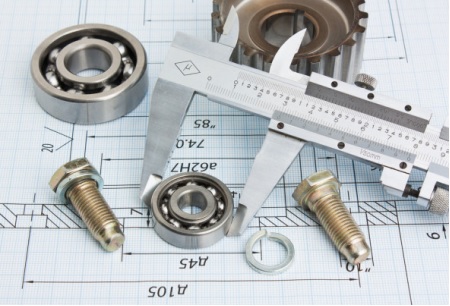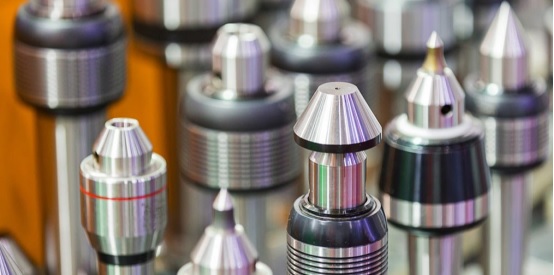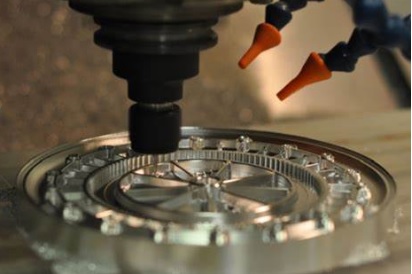3 Factors of Milling Accuracy and 4 Ways to Improve Milling Accuracy
This article mainly talks about factors of milling accuracy and ways to improve milling accuracy. But at the beginning, I’d like to explain 3 concepts in machining, accuracy, precision, and tolerance, which are easily to be confused.
Accuracy, Precision and Tolerance
Accuracy
Accuracy refers to the difference between the actual measurement and measurement from your system. If the difference between the two is extremely less, then the accuracy of that measurement is said to be high. It is also referred to as the degree of conformity.

Precision
This is another most important term that is used in CNC machining. Also, this term defines the reliability of a machine tool. Basically, precision is a measure, which defines the capability of a measurement system to return the same measure again and again. You can call it repeatability of the measurement system. Therefore, if you are looking forward to getting a reliable information, which you can use for your further calculations, then you have to ensure good repeatability of the system. Besides this, it is very important for a measurement system to be both accurate, as well as precise.
Tolerance
Last, but also the important – tolerance. The term tolerance can be defined as the allowable or predictable deviation of the measurement system from the known or standard value. The tolerance of any system is usually expressed as “+/-”.
3 factors of milling accuracy
1. The accuracy of the milling machine.
Generally speaking, machine tools that produce workpieces have coordinate axes. If the accuracy of the machine tool's coordinate axis is not high, the deviation of positioning accuracy will cause the size error of the workpiece produced by the machine tool, thereby producing a large number of workpieces. Meet the quality requirements, defects occur. The positioning accuracy of the machine tool also affects the vibration frequency of the spindle. The higher the vibration frequency of the spindle, the rougher the surface of the workpiece. In this way, the workpiece can not only meet the specification requirements in terms of specifications, but also cannot meet the appearance requirements in terms of appearance finish.
In addition, the fineness of the machine table will also affect the production of workpieces to a certain extent. If the accuracy of the working surface is poor, it will affect the accuracy of fixtures and other tools that work with the working surface. The operation of the machine tool requires a series of tool coordination. If an error occurs in one link, it will cause different levels of problems in other links.
2. Selection of milling cutter.
In milling, the most important component is the milling cutter, which directly interacts with the workpiece. In the form of milling, the quality of the milling cutter directly determines the quality and accuracy of the workpiece.

When working on a machine tool, if a softer milling cutter is selected, it is difficult for the milling cutter to resist high-speed milling and continue to wear, leading to premature use and affecting the processing technology and accuracy of the workpiece. It can be seen that it is difficult to strictly forge the workpiece with a softer milling cutter, and the production quality will naturally decrease. Soft milling cutters include YT type cemented carbide milling cutters and high-speed steel milling cutters. Other factors such as the shape of the milling cutter, the structure of structural elements, and the overall selection will change the accuracy of the milling cutter. Different types of milling cutters are suitable for processing different types of workpieces. If you want to cut the workpiece, you need to choose a tool with a small diameter and a large thickness to reduce the wear of the milling cutter and enhance the control of the workpiece. The parts of the milling cutter cannot meet the requirements, which will also affect the stable operation of the entire manufacturing process and the accuracy of manufacturing.
3. Unreasonable use of workpiece clamping.
When using a milling machine to process a thin workpiece, the worker fixes the workpiece in the fixture and then proceeds to the next step. If the clamping position is improperly designed and the force is not properly controlled, the thin workpiece may be deformed and affect the accuracy of the workpiece. Thin tools should not only pay attention to the positioning of the clamping, but also pay attention to the workpiece with a slender shaft. In order to ensure the accuracy of slender shaft workpieces, the staff will set up supports when processing such workpieces. Due to the long length of the slender shaft, special attention must be paid to the accuracy of the clamping. Once the slightest deviation occurs, it may cause problems in part of the slender shaft.
4 ways to improve milling accuracy
1. Control the degree of vibration during processing.
Vibration often occurs during milling. If the vibration frequency is too large, it will have a greater impact on the overall machining accuracy. In order to effectively solve the vibration problem, workers choose a high-rigidity operating system to improve the rigidity of machine tools and other components as a whole, adjust the assembly coordination of each component, and make all the links of the work closely match, reduce the possible vibration frequency, and thus increase The production accuracy of the workpiece.

2. Control all parts of the machine tool.
The positioning of the machine coordinate axis will affect the machining accuracy of the workpiece, and the accuracy of the machine surface will also affect the machining accuracy. Before operating on the machine tool, you should strictly control the various parts of the machine tool, check the positioning and surface condition of the machine tool axis, eliminate reversible factors, and improve the overall performance of the machine tool.
3. Selection of milling cutter and installation angle of the milling cutter.
Milling cutter is an important part in workpiece processing. Choosing a suitable milling cutter and controlling the installation angle can appropriately improve the machining accuracy of the workpiece.
Before choosing a milling cutter, the staff needs to understand the type of milling cutter suitable for the current operation, understand the parameters of the milling cutter, and choose the most suitable milling cutter for the entire system. At the same time, we must grasp the development trend of milling cutters, and use the latest milling cutters to complete various angle adjustments. In addition, workers need to pay special attention to whether the discharge is normal during the milling process, so as not to reduce the accuracy of the workpiece due to the setting of the tool.
4. Improve method of workpiece clamping.
The reasonable degree and accuracy of workpiece clamping have a certain influence on the overall accuracy of the workpiece. The production of different workpieces requires different clamping methods. The staff first needs to understand the fit and clamping method of the workpiece, and then the specific positioning of the clamping method on the machine tool. In order to integrate the workpiece and the clamping method more closely, the staff can make a plan in advance, clarify the clamping direction and clamping force, and then perform precision machining on the workpiece according to the specific plan.
In short, improving milling accuracy can be achieved in many ways. For example, when installing a probe, the most important thing is that the staff needs to select the appropriate processing tool according to the specific processing scene, control the accuracy of the tool and the machine tool, to ensure the accuracy of the workpiece to a certain extent.


